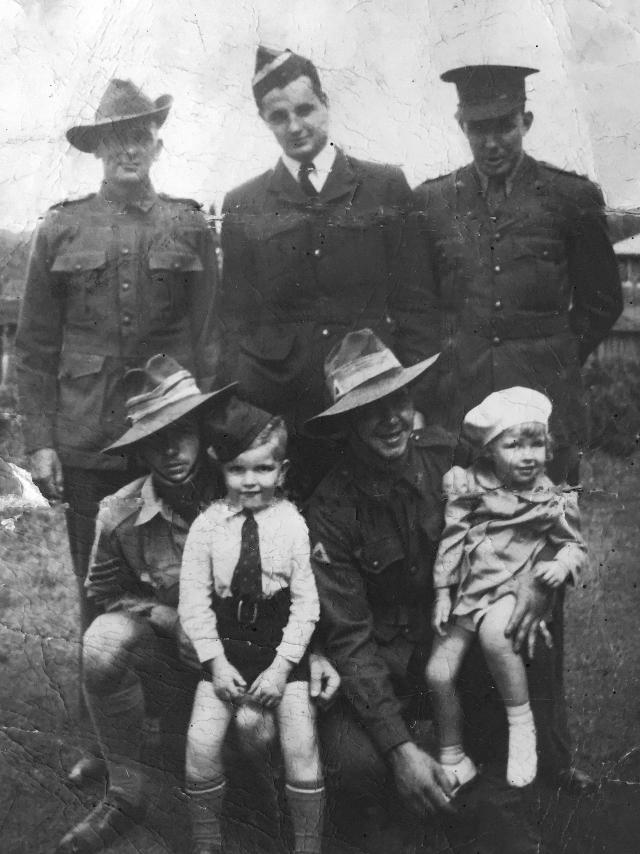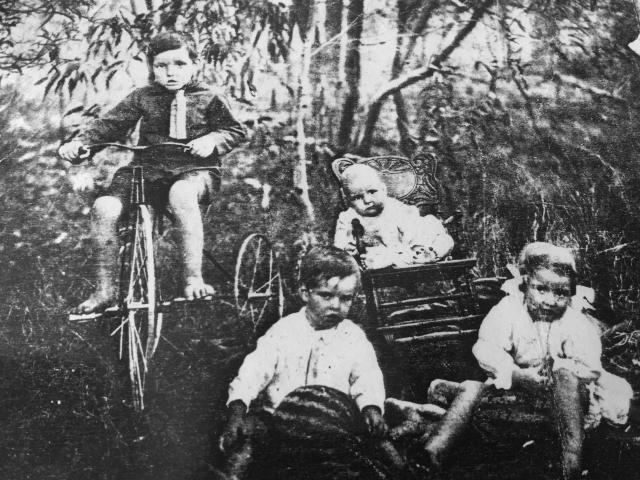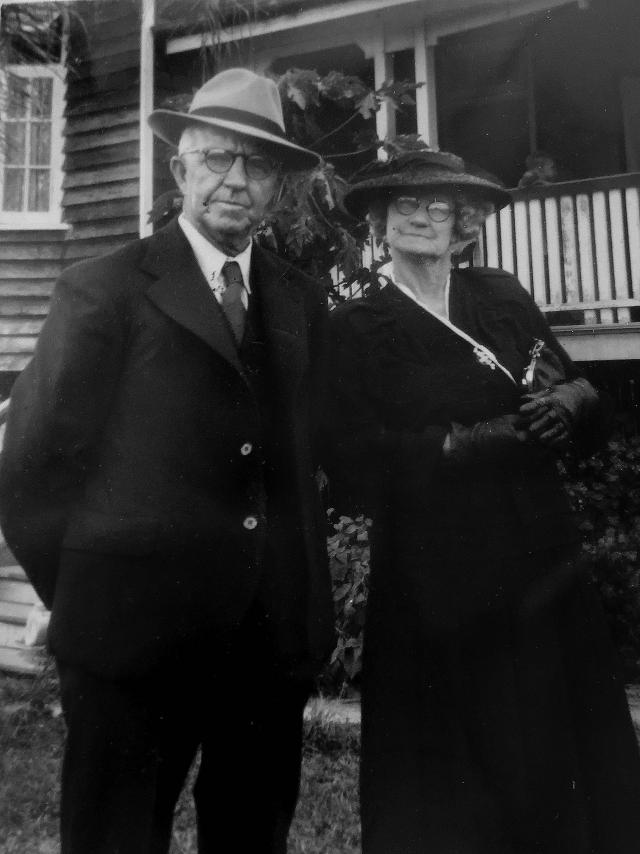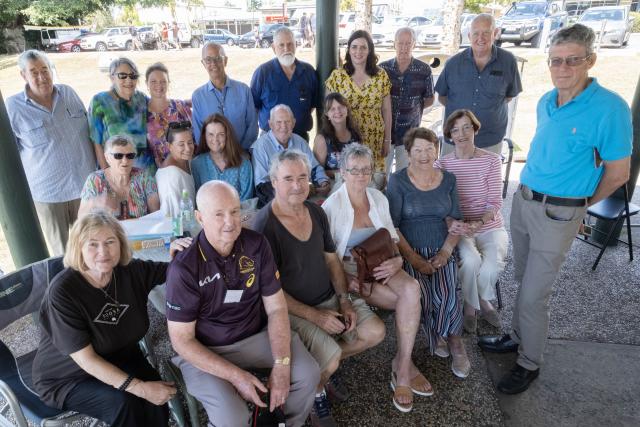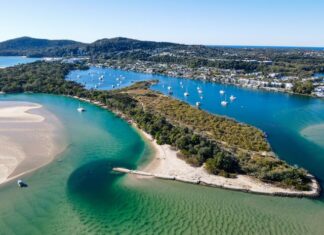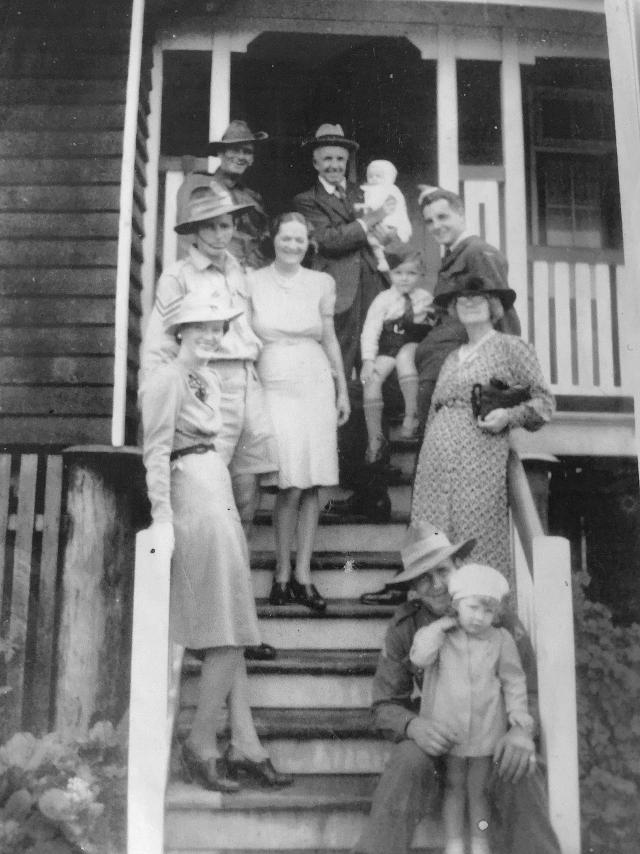
The Hooper family reunited on Saturday to renew ties and reflect on a family history in Tewantin which began in Cornwall, England with a downturn in copper and tin mining.
Cornwall miner William Henry Hooper married Mary Ann Parkyn whose father, John Parkyn, worked in a nearby mine.
In 1888 both the Hooper and Parkyn families left Cornwall headed for the promise of riches in the gold mines of Gympie where William Henry was appointed mining captain at Gympie’s Eastern South Mine. He also took on a dairy farm at Deep Creek, Gympie where his son, also William, began his teacher training and married Beatrice Anne Rowe.
The couple moved to Tewantin where William took up the position of head teacher at the state school from 1921 to 1952, a remnant of about 500 pine trees (Pinus Taeda and Pinus Ellioti) he planted from 1937-1939 around the school border stands as a legacy which can still be seen from Poinciana Avenue.
The couple had six children, William Henry, Eunice, James, Vivian and Harold, born at Reid Creek where his father had been a teacher, and the youngest, Ronald (who was killed in a plane crash in 1942 at the age of 19 while training to be a pilot), born in Tewantin.
William’s granddaughter Lynnette Cameron (William Henry’s daughter), has researched her family’s history, organised last weekend’s reunion and recalled the golden days of the era.
As head teacher William immersed himself in community activities.
“We know that he was, in one year, Cock of the Walk at the local bowls club. We believe he helped the Parkyn family to set up their boat hire business at Parkyn’s jetty, and that he also helped the Donovan family to establish their transport business,“ Lynnette said.
“We know that for some years grandad owned the Jannett, an historic river boat. It was designed and built by Norman Wright (about 1911) for the manager of the Gympie Gold Mines, Major Reid, who named the boat after his wife.“
Moored at Parkyn’s jetty, the Jannett was readied for trips on the river for visiting dignitaries and used to transport clergy to Halse Lodge, so the family story goes. The Jannett has since changed hands.
Lynnette last saw the river boat moored at the Massoud jetty, but it has since disappeared and she fears for its future.
“The Jannett had been a part of the magic of our time here,“ she said.
“We must have spent days out on the boat up the Everglades.“
Lynnette has fond memories of time spent with her grandparents in the school house (which has since been demolished) and then after her grandfather’s retirement at the green house he built in Werin Street.
“We must have spent hours playing in the pine forests in the school grounds. On the far side, away from the main road, there was an air raid shelter. I have a clear memory of having to race to that trench one day, peering up and seeing two or three toy-sized planes, black against the sun – Japanese planes.
“I remember riding in the school yard sitting behind my older brother Peter as we plodded along on the wide back of the steady, patient horse named Dobbin,“ she said.
“My strongest memories of holidays spent in the Werin Street green house above the lake are connected to our time spent playing in the very shallow waters of Lake Doonella.
“Peter, younger brother Ron, maybe baby Carol and I, and whichever cousins were around, would spend hours down the steep slope to the lake, balancing along the boards across the mud to the water and playing in and out of the float bottomed net boat sitting against the shore.
“It was safe for us to walk without adult supervision from Werin Street to the river near Parkyn’s jetty. The whole town watched over us. The river was our playground for swimming, fishing and annoying soldier crabs. There were vast armies of these comical creatures in spots along the riverbank. Now there are none.
“We loved going to Noosa Heads. The parking lot next to the surf clubhouse was then a big sand hill which we would scramble up and roll down the other side.
“Across the road was a long guesthouse, Laguna House. My parents spent their honeymoon there. As a child I longed for the day when I would be one of those glamorous people lounging on the veranda, or leaning casually on the railing.
“Every year there was a big surf carnival. As part of the program there would be a Beach Beauty competition where shapely young ladies would parade in their demure swimsuits. For the children there was a sand castle building competition. It took place on the beach where the Sandcastle resort now stands.
“Another Noosa Heads attraction was the camping ground at the end of Hastings Street. At Christmas it was always packed with real canvas tents.
“It seemed much more romantic than staying in a solid house.
“They were wonderful days.“
Lynnette’s grandfather William Hooper died in 1956 only four years after his retirement and following a severe stroke.
Her grandmother, Beatrice, passed away just a few months later.
Lynette and her husband John returned to Noosa to live a few years ago and at the family’s first reunion were joined by a group of siblings, cousins, partners and their children and grandchildren who travelled from across the state and interstate for the event.

